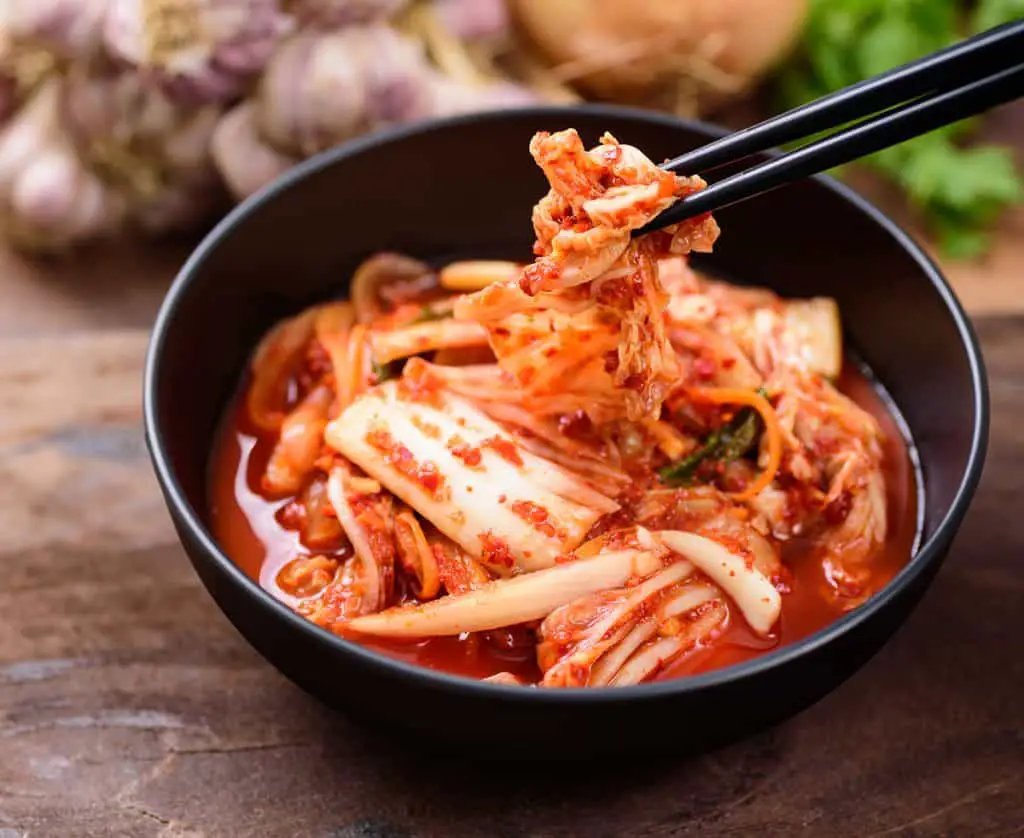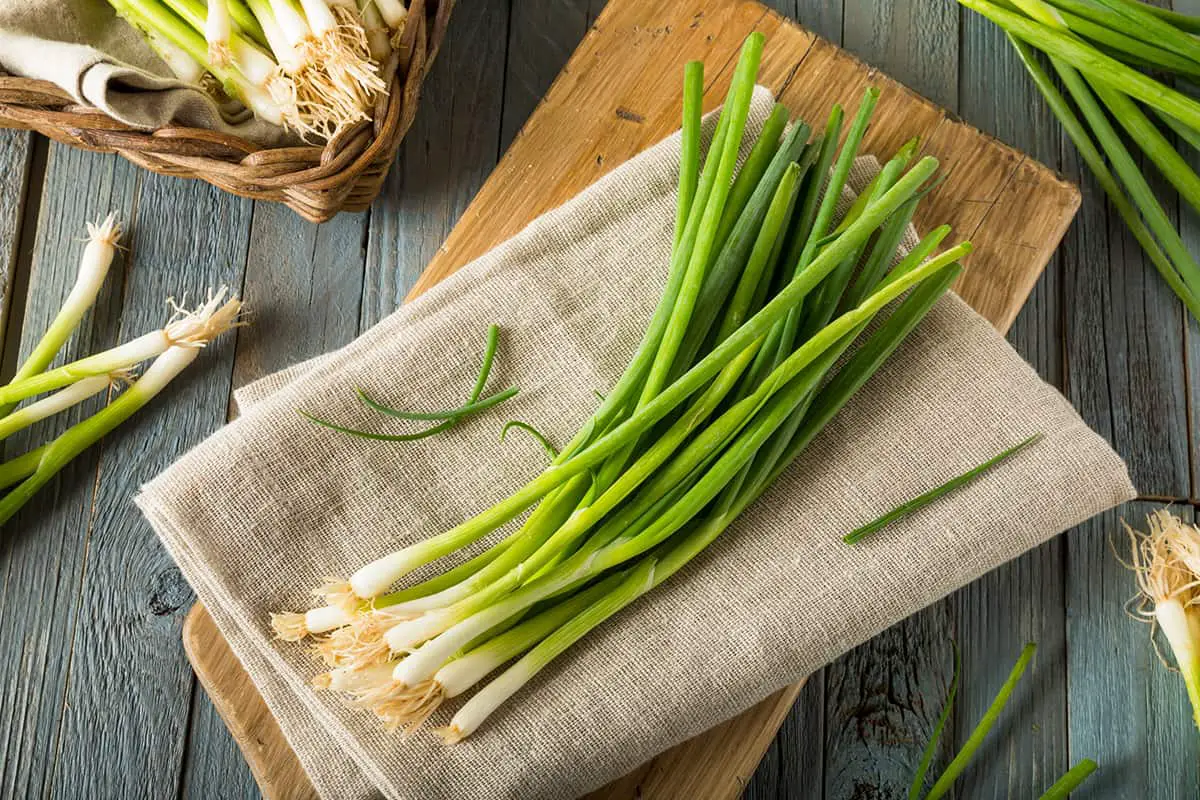How to Freeze & Store Kimchi (For Best Flavor)
Kimchi is a traditional Korean dish—commonly a side dish—consisting primarily of fermented vegetables. The dish itself is known for its fermentation process, which goes hand in hand with its acclaimed preservability. If you’re interested in making or keeping kimchi, it’s essential to know how to preserve and maintain the meal to its fullest extent.
This leads to the question: Can you freeze kimchi?
You can freeze kimchi. If kept under the right conditions, freezing leftover kimchi can extend its shelf-life for up to 3 months. However, if unopened, kimchi is recommended to be refrigerated and kept in a jar.
Within this article, I’ll assist you in understanding when you should freeze your kimchi and kimchi-based dishes. I’ll also cover the best method to accomplish this without compromising the integrity or flavor of the meal and how you should go about defrosting the kimchi.
Should You Freeze Your Kimchi?
Surprisingly, there are quite a few methods to store and preserve kimchi effectively. It’s commonly kept in the fridge, sometimes the freezer, or even underground, as it was traditionally stored in Korea. Each method is suited for particular circumstances.
You should freeze your kimchi if you have kimchi leftovers you wish to preserve for much longer. Doing so can significantly extend the leftover kimchi’s shelf life for up to 3 months.
While you can keep kimchi for extended periods successfully, the quality of the meal will decrease over time. It can be stored for months before it begins to lose its flavor, texture, and overall integrity.
Therefore, freezing kimchi can be a very effective way of preserving it for the long term. However, this is consistent only if stored correctly, which I’ll discuss late in the article.

Kimchi Leftovers Can Last for at Least 3 Months in the Freezer
Something important to keep in mind is that you should keep leftover and sealed kimchi differently. That’s because kimchi is in a constant state of fermentation, and exposure to air can greatly affect this process.
Kimchi that has been opened and exposed to air will only keep in a refrigerator for a week at most. In contrast, if stored correctly in a freezer, leftover kimchi can last upwards of 3 months.
On the other hand, if you want to store unopened or freshly made kimchi, your best bet is the refrigerator. Refrigerating your dish instead of freezing it will only slow down the fermentation process. Properly stored meals can last for six months before going bad.
Healthline recommends that kimchi be refrigerated below 39°F (around 4°C) to maintain its quality.
Note that “bad” is a matter of opinion in this regard. Some people enjoy kimchi that has aged longer and therefore desire a more sour taste. However, if your kimchi is exhibiting mold or a more odorous smell, you should throw it away immediately.
You Can Freeze Other Kimchi-Based Dishes
Other kimchi-based dishes are just as amiable with a frozen method of storage.
Dishes like kimchi-jjigae (stew) and kimchi mandu (dumplings) are okay to be frozen and will freeze for quite some time with very little consequence.
What’s more, thanks to a method discussed on The Infinite Kitchen, is the freezing of kimchi paste. If required to be kept separately, the condiment can quickly be scooped into the sections of an ice cube tray and frozen.
However, these meals won’t store for nearly as long as plain kimchi in the same circumstances.

What Is the Most Effective Way To Freeze Kimchi Meals?
As previously established, freezing kimchi is an effective way to store for long periods. However, this is only true if you’re storing the food correctly.
The most effective way to freeze kimchi meals is to freeze them within a sealed freezer-safe container or heavy-duty plastic bag. It’s dangerous to store a jar of kimchi in a freezer, as it may result in the glass shattering. If done correctly, kimchi can be stored frozen for months at a time.
Therefore, a few requisites must be met if you wish to store this meal effectively.
How To Store Kimchi
I’ve included a short guide for storing your kimchi correctly to assist with this. The steps are as follows:
- Select a freezer-safe, resealable container. If you’re lacking in this department, I would personally recommend these Bentgo Freezer-Safe Containers from Amazon.com. These compact sealable tubs are perfect for storing all kinds of foods and will excel at keeping kimchi fresh and tight for months of fridge or freezer storage.
- Place as much of your leftovers as you’d like into airtight containers. Consider the RLAVBL Reusable Freezer Bags (also on Amazon.com), or your bag of choice, to achieve a more airtight container. I recommend this product for its reputable endurance and reusability—the latter of which being very good quality for freezer bags in particular. Their versatility as food storage containers is unmatched.
- Seal your container and record the dates by marking them. Doing this will allow you to keep track of each stored package and ensure none will surpass their best-before date.
Keeping Your Kimchi in a Sealed Bag Helps Maintain Its Quality
Sealing these containers is crucial, as otherwise, ice can appear in the kimchi and dilute the flavors of the condiment once it has defrosted.
Having this happen will severely impact the dish’s integrity, causing it to be mushy and tasteless.
The method above should be enough to prevent this if done sufficiently. However, using a vacuum sealer (Amazon) to completely air seal your chosen container can be an extremely effective method to ensure no quality breach in your kimchi.
How Do I Defrost My Kimchi Correctly?
I’ve discussed when and how to store your kimchi in a freezer correctly—all you need to know now is how to defrost it properly. This part is possibly the most important, as doing so incorrectly can lead to depletion in the quality of your dish.
You can defrost your kimchi correctly by allowing it to thaw over several hours gradually. The kimchi should be moved to a refrigerator to thaw slowly and properly.

Thaw the Kimchi in a Refrigerator
The first method, as previously mentioned, involves placing the kimchi in the refrigerator and waiting several hours.
In doing this, you’re giving your kimchi enough time to thaw slowly. This approach bypasses the risk of altering its flavor or texture you’d otherwise face by simply removing it from the freezer.
The above technique is a universally agreed-upon habit. Lana Restaurant discusses it expressly, and even I regularly do this for my batches and favor the result.
While the wait may appear long, know that you can consume kimchi while cold. This means as soon as you’ve given it enough time to thaw completely, you’re free to take the dish straight from the refrigerator to your very own plate.
Cook the Kimchi Right Away
On the contrary, you may be looking to implement your kimchi directly into a recipe. In this case, it’s entirely safe to retrieve it directly from your freezer and use it for your cooking.
By doing this, you aren’t risking the loss of flavor or structure in your kimchi, as the heat from adding it to your meal will do away with any unthawed ice.
Provided you cook them in conventional ways, foods like kimchi-jjigae (stew), kimchi mandu (dumplings), and kimchi fried rice are all amiably made with unthawed kimchi.
Final Thoughts
To conclude, the storing of kimchi is a simple process, given that you understand what you’re doing. How you’d ideally store it will depend on the state of your kimchi; while unopened kimchi will fare better refrigerated, leftover kimchi is kept successfully in a freezer.
It would be best to keep frozen kimchi sealed and away from exposure to air. In thawing, you must do it slowly. There’s no point in keeping kimchi frozen successfully, only to spoil it once you’re ready to eat it.






